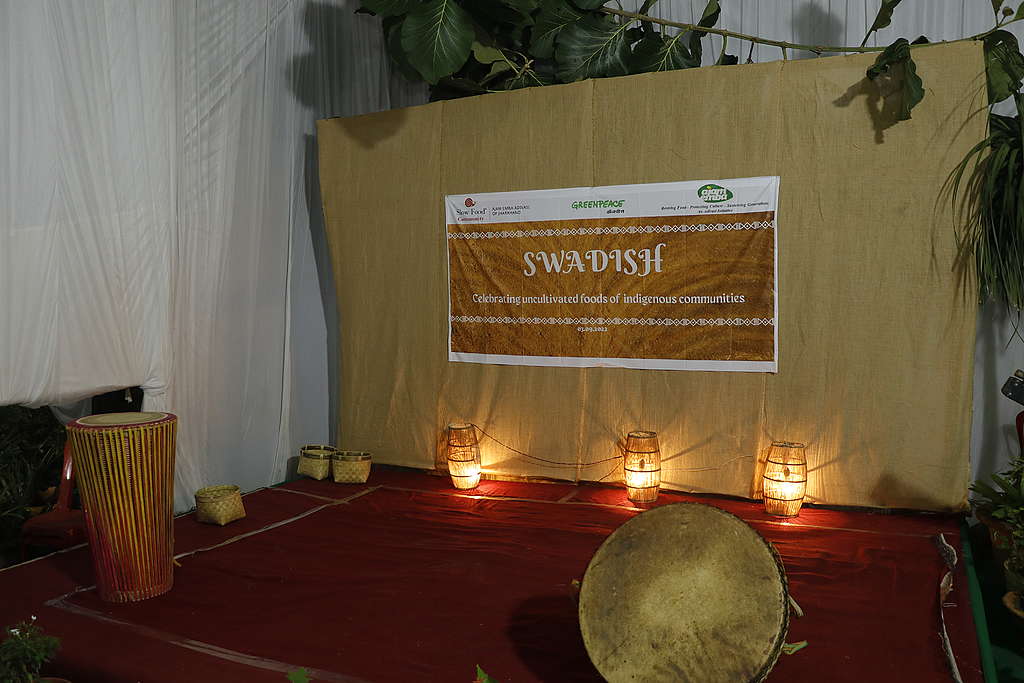
On September 3 2022, Greenpeace India, in collaboration with the Jharkhand Slow Food Community, hosted a Chef’s Table called SwaDish at Ajam Emba, Ranchi, to showcase indigenous cuisine prepared by indigenous chefs. The objective behind the event was to highlight the importance of uncultivated and forgotten food in enhancing dietary diversity, ensuring food and nutritional security, and providing better livelihood options for farmers in the face of climate change.
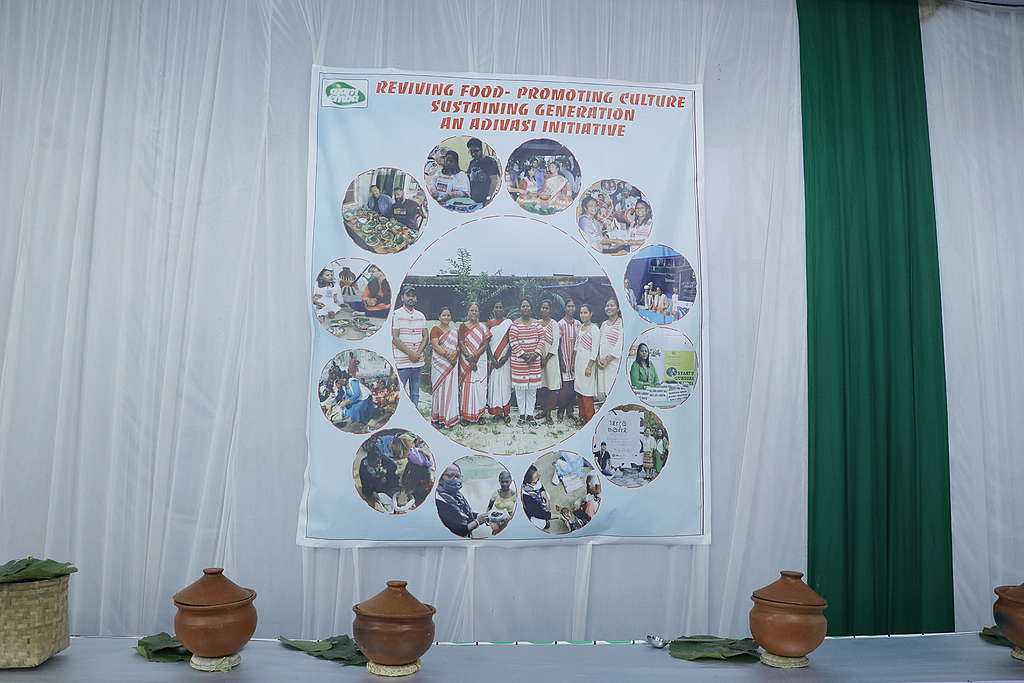
SwaDish was specifically aligned with the National Nutrition Week in India (1st September to 7th September) and was attended by a varied audience including government officials, civil society organisations, activists, farmers, singers, filmmakers, researchers, agricultural university officials and journalists. The event, which is part of Greenpeace’s Food For Future campaign, was the second such event to be hosted in the past few months, the first Chef’s Table being held in Bengaluru to celebrate indigenous rice varieties. The emphasis of SwaDish was on uncultivated food and millets in order to provide a constructive counter-narrative to false solutions such as chemically-fortified food.
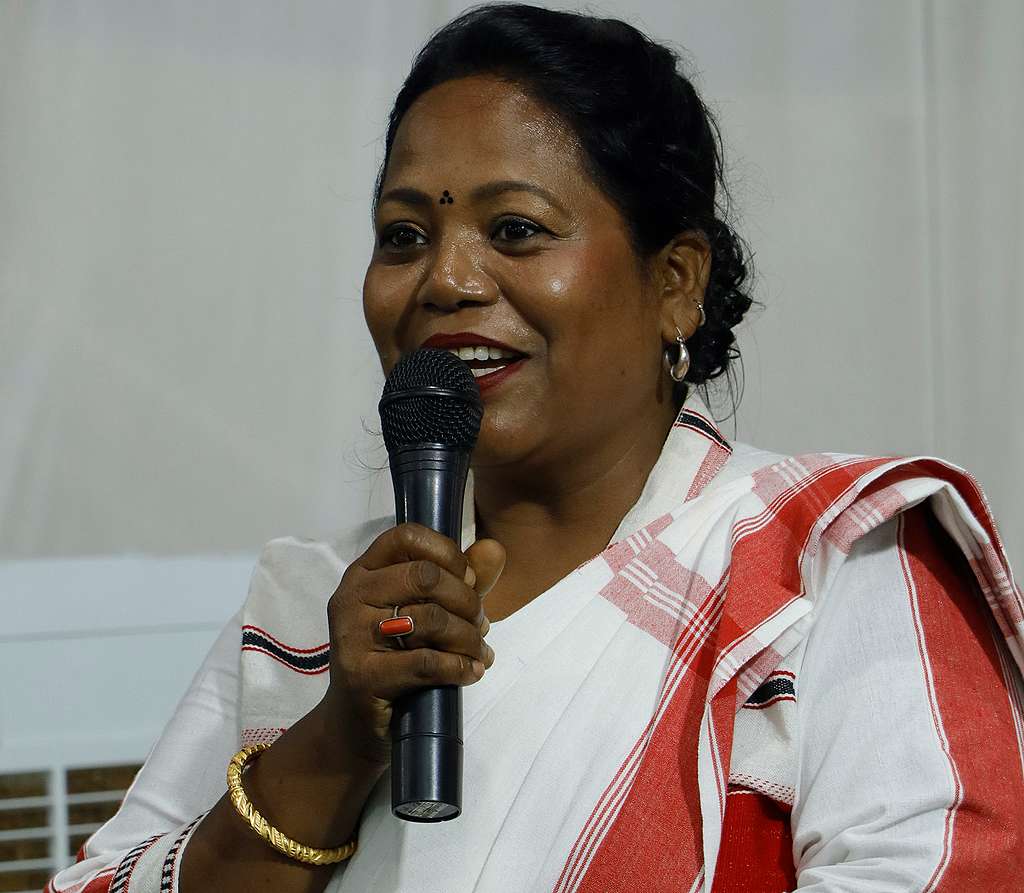
Aruna Tirkey, the Founder and Director of Ajam Emba, Ranchi, said, “Our ways of eating have historically been in accordance with nature. These are changing with the introduction of other foods. But, it is our traditional food and grain that is healthy and nutritious. This is an evening to celebrate our culture and food.”
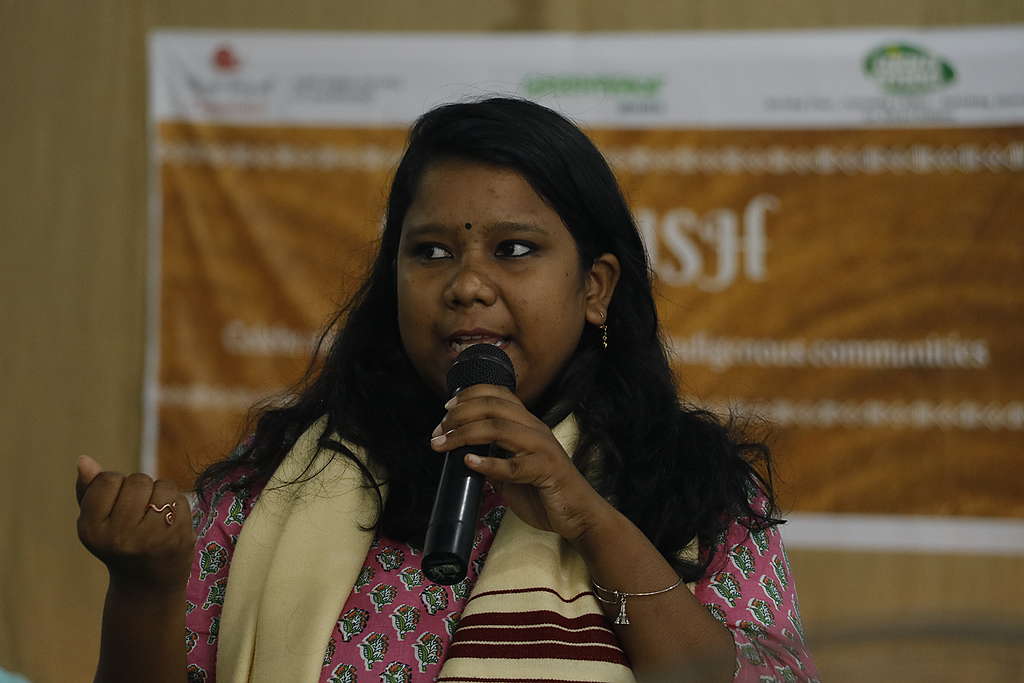
“As an adivasi youth, I have seen our culture being shamed and forgotten. Events like these provide platforms for learning and sharing to not only preserve our culture and food but also begin to take pride in them”, said Archana Soreng, member of UN Secretary General’s Youth Advisory Group on Climate Change.
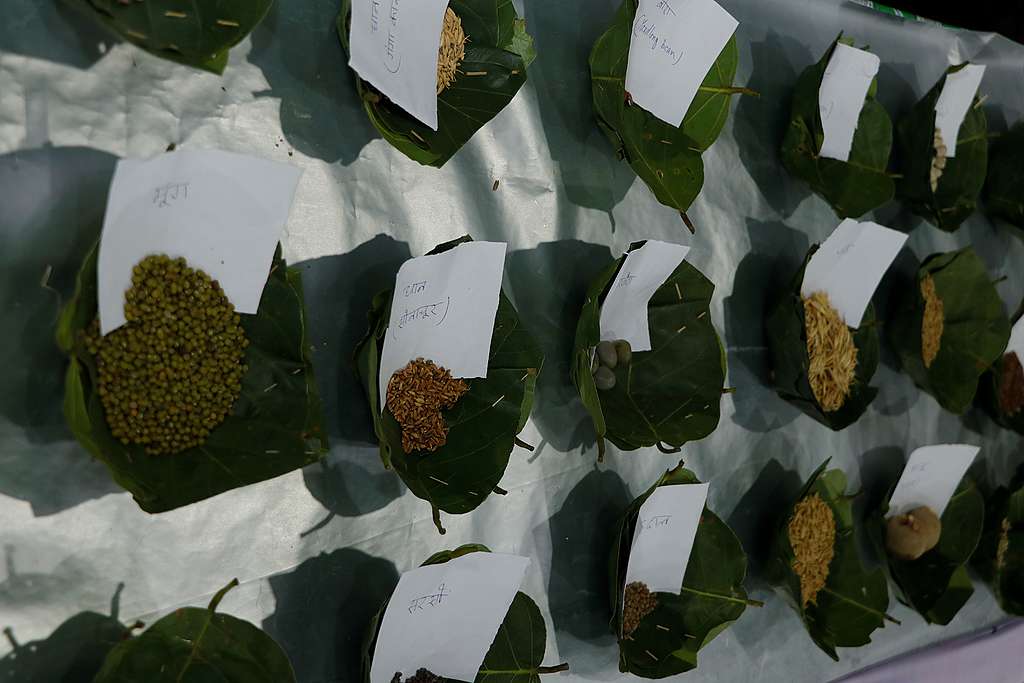
Display Of Native Seed Varieties
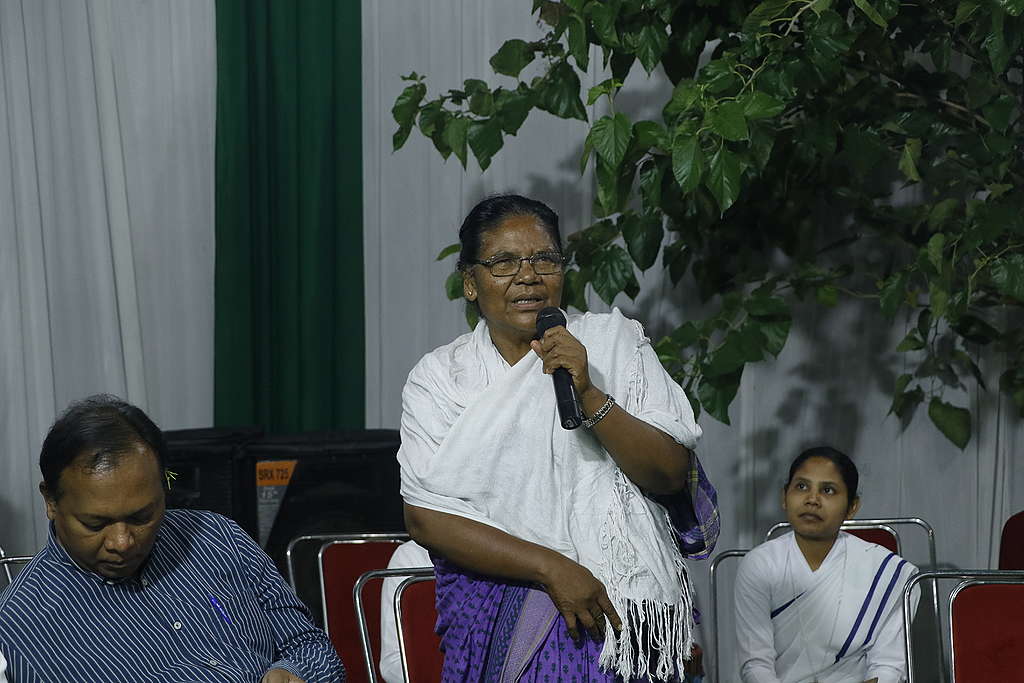
Dayamani Barla, adivasi land rights activist, said, “The government is now talking about ending malnutrition. How will we do that if we do not respect our tradition of diverse and inclusive foods and dietary habits? Our people always consumed millets, which are nutritious, naturally healthy and resilient. But, millets were termed poor people’s food. Now, we are given chemical tablets for vitamins and minerals. It is only our traditional foods that are best for our communities and their health.” She added, “I request Greenpeace India to also fight for our soil and our forests alongside our food.”
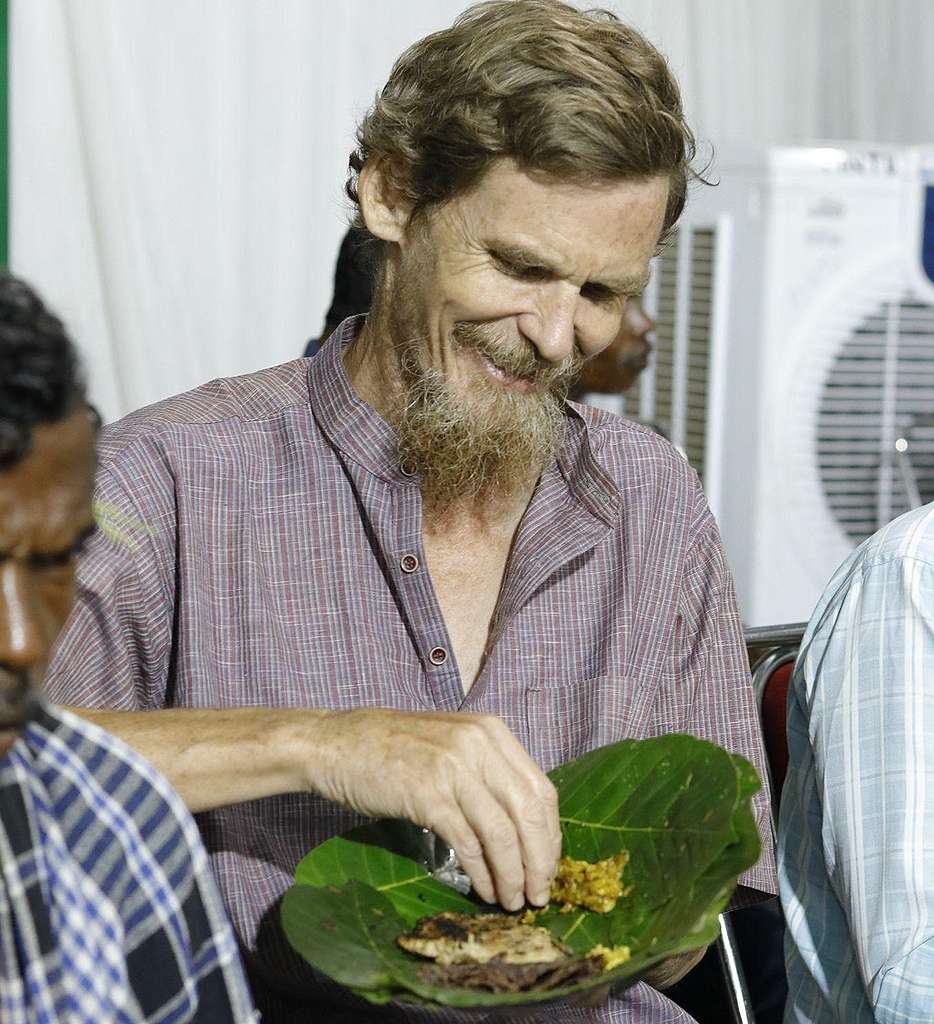
Jean Dreze, economist and scientist, said, “Not so long ago, the hills and forests of eastern India were teeming with animal life and luxurious vegetation. In this abundant environment, Adivasi communities developed a sound food system as an integral part of their admirable way of life. This food system, with its strong element of mutual aid, was not just a source of good nutrition but also an inspiring example of economic democracy”
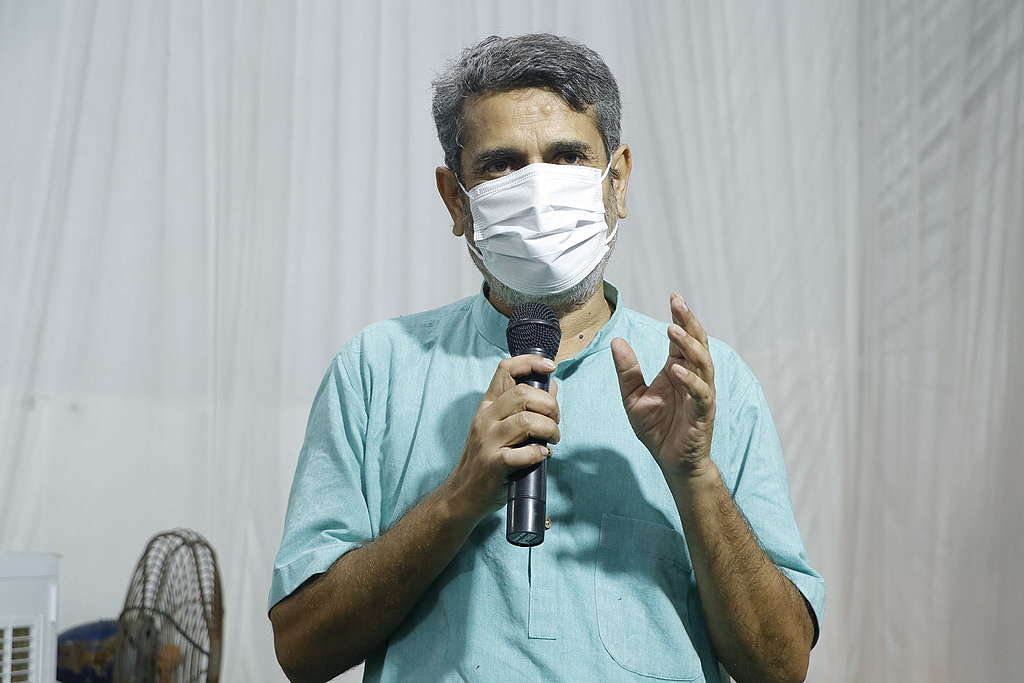
Greenpeace India’s Senior Agriculture Campaigner, Ishteyaque Ahmad, commented, “We are seeing a crisis of malnutrition clubbed with the climate crises across the country, and the worst affected are politically and economically vulnerable communities and their women. To fight, the only way ahead is working together on preserving our traditional food systems and enhancing our dietary diversity by including millets, uncultivated food and forgotten food in our daily diets. Our food choices have a big impact on the health of our people and environment alike. For a healthy and resilient future, we must behave as climate warriors by opting for locally grown seasonal food.”
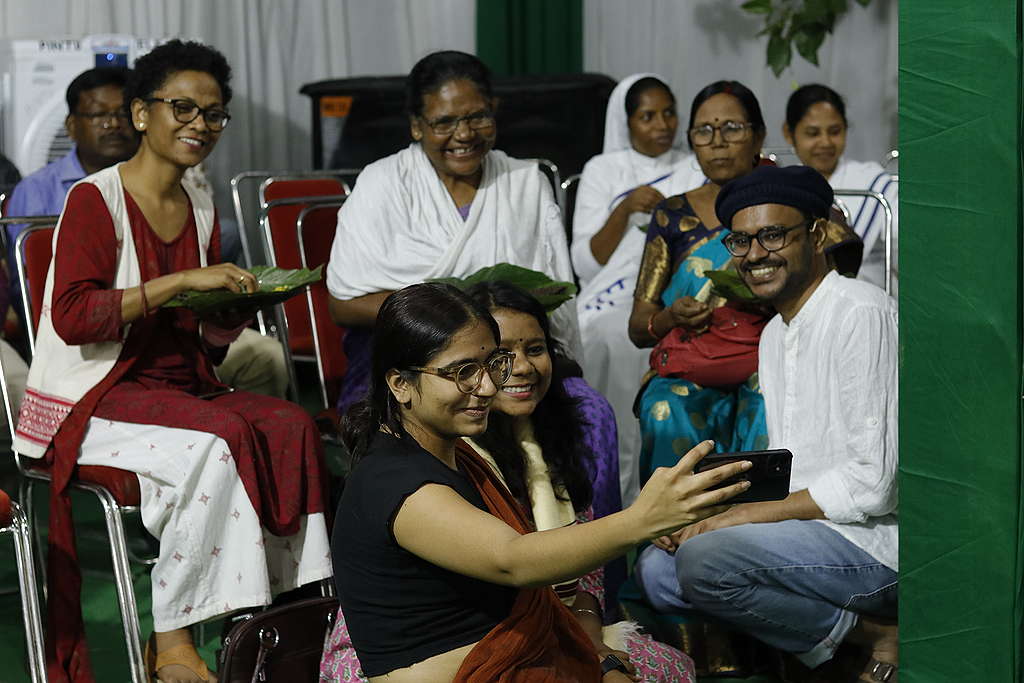
Finally, the event witnessed the launch of Greenpeace India’s Food for Future petition to ask for the introduction of iron-rich, resilient and native varieties of rice, millets, pulses, vegetables and fruits in the Public Distribution System (PDS) across India to strengthen nutritional security and fight climate change. With the success of SwaDish, we hope to emerge with collaborative research opportunities, enhanced political advocacy and a roadmap towards building rich, sustainable and resilient food systems for all citizens.
